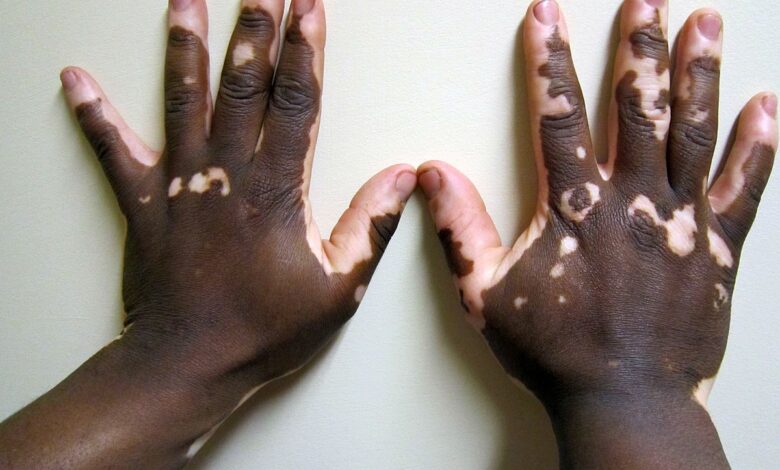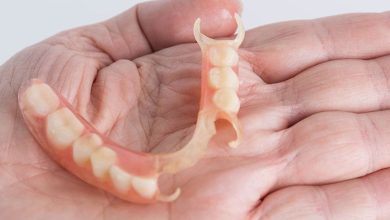7 EFFECTIVE HOME REMEDIES FOR VITILIGO TO REDUCE PESKY WHITE PATCHES
7 Effective Home Remedies for Vitiligo to Reduce Pesky White Patches


Vitiligo is a condition in which the skin loses its pigment cells (melanocytes). This can result in discolored patches in different areas of the body, including the skin, hair and mucous membranes. Vitiligo is a disease that causes loss of skin color in patches.
Patchy loss of skin color is the primary symptom of vitiligo. They, usually, first appear on the hands, face, and genitals. Apart from being small or large in size, those white patches may also appear in different patterns. Premature graying of eyebrows, eyelashes, and hair on the head is another common sign of the disease.
The exact causes of vitiligo are still not very clear to scientists. However, it is believed that the death or poor functioning of melanocytes is related to autoimmunity, heredity, triggers like severe sunburns, skin trauma (exposure to chemicals or toxins), high levels of stress, and emotional distress.
Table of Contents
Types of Vitiligo
Based on the pattern of the patches, vitiligo can be of following four types:
- Universal Vitiligo: The patches cover almost all skin surfaces.
- Generalized Vitiligo: These widespread patches are seen in many areas of the skin and appear symmetrically on both sides of the body. It is known to be the most common type and continues for a lifetime.
- Segmental Vitiligo: The patches are smaller in size and appear only on one side or area of the body. It starts at a younger age, progresses slowly, and stops after a year or so.
- Localized (Focal) Vitiligo: The patches tend to appear on one or a few areas of the body in a localized form.
- Acrofacial VItiligo: The patches develop on the face and hands as well as around the body openings (eyes, ears, and nostrils).
Home Remedies for Vitiligo
1. Turmeric and Mustard Oil
Both turmeric and mustard oil are great immunity boosters and the combination is thought to help re-pigment the skin upon prolonged use.
In fact, the active ingredient called curcumin in turmeric is an antioxidant, which has a relieving effect on vitiligo.
How to Use:
- Mix 5 teaspoons of turmeric powder with 250 ml. of mustard oil. Store this in an airtight container and apply on the white patches on your skin twice a day. Make sure that you blend the mixture well before each use.
- Grate around 500 gm. of turmeric root and soak it overnight in 8 lt. of water. The next morning, boil the mixture and reduce the volume to (1/8)th. Strain it and add 500 ml. of mustard oil. Keep heating this concoction until it reduces into a thick, oily substance. Apply this to the white patches on your skin every morning and evening.
2. Neem Leaves
Neem leaves are known to be highly efficient in treating vitiligo in a natural way. They work by healing the underlying cause of vitiligo, thus decreasing the severity of the white patches.
How to Use:
- Take a handful of fresh neem leaves and wash them well. Blend them with a little bit of water and pass it through a sieve. Press well to extract all the juice from the crushed leaves. Store it in a bottle. You can drink one glass of this plain neem juice every day.
- Mix 2 teaspoons of the juice with 1 teaspoon of honey and drink the concoction thrice a day.
3. Babchi Seeds and Tamarind Seeds
Babchi seeds being rich in Psoralen and other phenolic compounds, may combat vitiligo and induce repigmentation.
When combined with tamarind seeds, babchi is considered one of the best home remedies for this common skin disorder. However, babchi seeds may not be suitable for all types of skin and can lead to itching or redness. If you find yourself sensitive to this remedy, choose other options.
How to Use:
Take both babchi seeds and tamarind seeds in equal amounts and soak them in plain water for 3-4 days. After that, shell the soaked seeds, dry them up thoroughly, and make a paste with water. Applying it to the white vitiligo patches twice every day for a few weeks.
4. Wild Duckweed
Wild duckweed, also called ‘Lemna Minor’, is an aquatic plant with leaves floating on the surface of the water. The plant grows especially in summer and has a high concentration of chlorophyll, which aids in bringing back the original color of the skin by adding pigments to white patches.
How to Use:
Clean a handful of wild duckweed well and make a paste out of it. Strain the juice. Sweeten it with honey if you want and drink 1 teaspoon of the concoction twice every day before meals
5. Red Clay and Ginger
Red clay, which is mostly found on the riverbed, is also said to be an amazing remedy for leucoderma for its high copper content.
At the same time, ginger is rich in phytochemicals, which help reduce discoloration. It may also boost the flow of blood throughout the affected parts of the skin, thereby inducing pigmentation.
How to Use:
Extract the juice of ginger and mix equal parts of red clay with it in order to form a smooth, lump-free paste. Apply it on the white patches on your skin once every day for visible results.
6. Sweet Basil Leaves and Lime Juice
Sweet basil leaf is considered as a potent ingredient in Ayurveda. It possesses amazing anti-aging as well as antiviral qualities, which help in curing a number of skin disorders including vitiligo.
When used repeatedly over a period of 6 months, this remedy promotes melanin production and brings relief from the skin condition.
How to Use:
Take a handful of fresh sweet basil leaves and make a paste with the juice of half a lemon. Apply this on the affected areas of your skin thrice every day, especially before taking a bath. Allow it to dry up completely and then, wash it off. Practice it twice every day for impressive results.
7. Radish Seeds and Vinegar
Radish seeds come loaded with bioactive compounds and hence, are widely used in India as a natural home cure for vitiligo. When used as a paste along with vinegar, they may help reduce white patches and reverse the symptoms of vitiligo.
How to Use:
Take around 25 gm. of radish seeds and grind them into a fine powder. Add a couple of teaspoons of vinegar to it and soak overnight.
Make a smooth paste in the morning and apply it to the white patches on your skin every day. However, do not wash it away immediately. Rather, let it dry for a couple of hours and peel off the scales gently before rinsing.
For any important information please contact us Email GadgetsNg info@gadgetsng.com
[Button id="1"]



